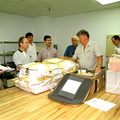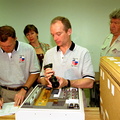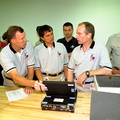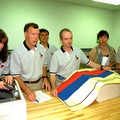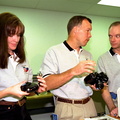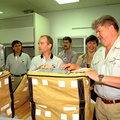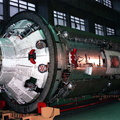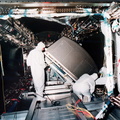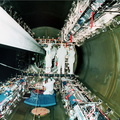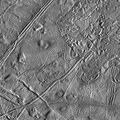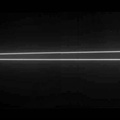
WIKIARCHIVES.SPACE
The Human Spaceflight Archive

These two views of Io were acquired by NASA's Galileo spacecraft during its seventh orbit (G7) of Jupiter. The images were designed to view large features on Io at low sun angles when the lighting conditions emphasize the topography or relief of the volcanic satellite. Sun angles are low near the terminator which is the day-night boundary near the left side of the images. These images reveal that the topography is very flat near the active volcanic centers such as Loki Patera (the large dark horseshoe-shaped feature near the terminator in the left-hand image) and that a variety of mountains and plateaus exist elsewhere.
Information
- Taken in
- Author
- NASA/JPL/University of Arizona
- Description
-
These two views of Io were acquired by NASA's Galileo spacecraft during its seventh orbit (G7) of Jupiter. The images were designed to view large features on Io at low sun angles when the lighting conditions emphasize the topography or relief of the volcanic satellite. Sun angles are low near the terminator which is the day-night boundary near the left side of the images. These images reveal that the topography is very flat near the active volcanic centers such as Loki Patera (the large dark horseshoe-shaped feature near the terminator in the left-hand image) and that a variety of mountains and plateaus exist elsewhere.
North is to the top of the picture. The resolution is about 6 kilometers per picture element (6.1 for the left hand image and 5.7 for the right). The images were taken on April 4th, 1997 at a ranges of 600,000 kilometers (left image) and 563,000 kilometers (right image) by the solid state imaging (CCD) system on NASA's Galileo spacecraft.
The Jet Propulsion Laboratory, Pasadena, CA manages the mission for NASA's Office of Space Science, Washington, DC.
- Created on
- Thursday 26 March 1998
- Albums
- US SPACE PROGRAM / PROBES / JUPITER / GALILEO / Mission Photos (Edited) / JUPITER / IO
- Source link
- https://photojournal.jpl.nasa.gov
- Visits
- 15
- Rating score
- no rate
- Rate this photo
- License
- Public Domain
- Modified by WikiArchives
- No (original)
- Downloads
- 0
Powered by Piwigo
